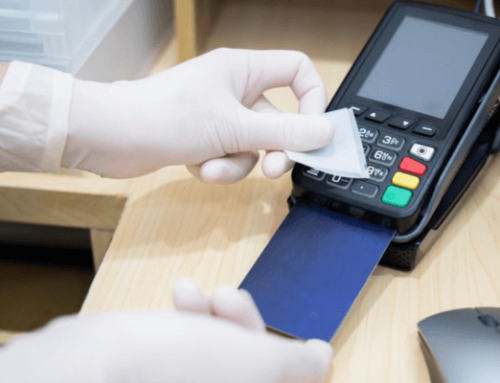
How can we take advantage of digital as a differentiating factor in the sales process, without compromising the importance of experimentation?
This question summarises the major challenge facing 21st century retailers. In an increasingly digital economy, guaranteeing customers a satisfactory and fulfilling shopping experience via the online channel is the centrepiece of the online market. e-commerce.
Although the end goal is the same as in traditional commerce, the online sales channel presents some challenges that require a more technological approach, which invariably involves online payments, social media marketplaces, virtual experimentation and stock management.
Because selling online, even without a website, doesn't have to be difficult, we've prepared a guide to help you succeed.
Guide to selling remotely, even without a website
Differentiated payment methods
Automating payments to provide faster and more secure checkout processes should be the main objective of online businesses. Satisfying this need will mean an increase in sales and better financial management because the entire payment process is done online, eliminating repetitive processes and reducing the cost of payment. shopping basket abandonment.
Selling online without a website
In the case of merchants who don't have an online shop and aren't orientated towards selling products in bulk, but who need to accept payments in a practical and secure way, the option may be to use a payment system that allows them to accept card payments remotely by link.
This is exactly what the solution REDUNIQ@Payments offers.
Let's take the example of a clothing shop that sells via Facebook. A customer is interested in your product and contacts you via direct message or telephone to formalise an order.
As a rule, payment is made before the product is delivered and if you have the solution REDUNIQ@PaymentsThe merchant can simply send a link to pay for orders directly to the e-mail, SMS or e-mail address. WhatsApp and redirects you to a secure UNICRE page.
On this page, customers enter their card details (Visa or Mastercard) and pay for their purchases. Once the data has been validated and authorised by the issuing bank, the transaction is carried out. At the end, the merchant is notified of the payment by e-mail.
As well as being advantageous because there is no need for the merchant to have a virtual shop or to be integrated with back-office systems, which simplifies the whole process in terms of time and costs, the solution REDUNIQ@Payments guarantees the security and confidentiality of the customer's bank details since the merchant does not have access to the card details at any stage of the payment.
Selling online with and without a website
O payment for online purchases continues to be the favourite of the majority of Portuguese consumers (80%) and therefore a business of e-commerce with or without a website must be prepared to accept this type of payment.
Let's imagine that the clothing shop we gave as an example in the previous point wants to diversify its payment methods. After the whole sales process, we arrive again at the point where the customer has to pay for the products they have ordered, but they want to do so by ATM reference.
Here, the trader can add REDUNIQ@Payments another product: Payment for Services. By simply accessing the REDUNIQ platform, the merchant has the possibility to issue payments by Multibanco reference or MB WayThe bank makes the payment for a given purchase available simply and immediately to the customer. The customer, in turn, only has to pay via the ATM network or via their bank's website.
For those businesses that have a website and want to take advantage of this service, there are two solutions:
- Integration directly on your site, with the E-Commerce from REDUNIQ
- Without integration, through the REDUNIQ platform for issuing Multibanco references
In either format, this service will allow you to issue references automatically, which ends up giving your customers more choice at the time of payment and thus promotes more sales in your business.
Distance selling directly from the website
The needs of a large online retailer are necessarily different from those of a small digital business. Given the large volume of accesses and sales, the customer's check-out (finalising the purchase) must be as simple and quick as possible.
Satisfying this need involves integrating a e-commerce solution such as REDUNIQ E-Commerce for payments on your website.
This product is an e-commerce module for websites that not only allows Visa, Mastercard and American Express card payments to be accepted, via MB Way and Multibanco reference, on digital channels through a single interface, but also analyses and manages sales made through a transactional analysis tool.
After "loading" your shopping basket with the good or service you want, when you pay, you will be directed to a UNICRE payment page. Here they enter their card details, which will be validated by the issuing bank and which they will never be able to access as a merchant. Once the transaction has been validated, payments are credited to your account within two working days of the date of purchase.
Social media marketplaces: making the most of their potential
As we've seen, there are payment systems suitable for those selling through social media marketplaces. Selling remotely via social media is a growing trend that is greatly fuelled by the wider universe of potential buyers and the possibility of interacting in real time with the target audience that these platforms make available to traders.
Selling on Facebook Marketplace
O Facebook marketplace As well as providing you with a virtual space to sell your products, this platform offers you a series of tools to help you boost sales and effectively manage not only issues related to scheduling publications, automatic messages and analysing reports, but also marketing strategies.
On this platform you can find the Facebook Insights solution, which allows you to track metrics and understand your typical consumer, helping you to refine your content, while the Facebook Ads tool gives you the opportunity to segment your audience and make more assertive adverts. This tool works on the basis of micro-targeting which, after gathering the various personal information available on Facebook users' profiles, directs your adverts to the audience most likely to buy something from you.
Taking advantage of social media marketplaces is valid for those who don't have an online shop, but it can also be extremely useful for those who do have a website, so you can vary the channels you operate on and reach a wider group of customers.
Outsourcing stock management
Managing stock is often a major headache for anyone who sells online, but there are "cure-alls". Whether you have an online shop or not, adopting a dropshipping system will allow you to use third-party stock to make your sales, i.e. the products you sell will not physically pass through you.
With dropshipping, you're still in charge of marketing and selling the products, but once the customer has placed the order, the transaction goes to the supplier. The supplier, in turn, ships the product directly on behalf of your shop to the end customer. Your profit margin will result from the difference between the amount charged by the supplier and the price advertised to customers on your website.
"Eye-catching digital shop window
Consumers are looking for a distinctive shopping experience, especially when they buy online. This necessarily involves a clear and appealing presentation of the product you want to sell, "customer service" and the configuration of your site for mobile devices. If you want to selling on social media you don't have to worry about this last requirement, as these sites are already optimised for smartphones.
In order to prevent questions such as "is this product original?" or "do I really need this?" from arising at the time of purchase, the interactivity between customer and product/service in an online shop must be maximised. The customer wants to see the product in order to remove all feelings of doubt before buying. That's why the layout of your site should make it possible for the customer to, for example, rotate the product, zoom in or define the design they want.
Similarly, try to introduce chatbots on your website. e-commerce. For example, chatbots can fulfil various customer service needs, from answering questions about a product to discussing a complaint. Chatbots also learn from customer conversations and evolve to better assist in a personalised e-commerce experience. Everything works as if it were a WhatsApp or Messenger chat, except that the virtual assistant takes the place of the trader when the customer asks questions.
Giving your customers a good shopping experience and attracting a new audience also involves optimising your sales website for mobile devices. Creating a mobile app for your business is now very easy, with thousands of online platforms doing it for you, many of which are free.


